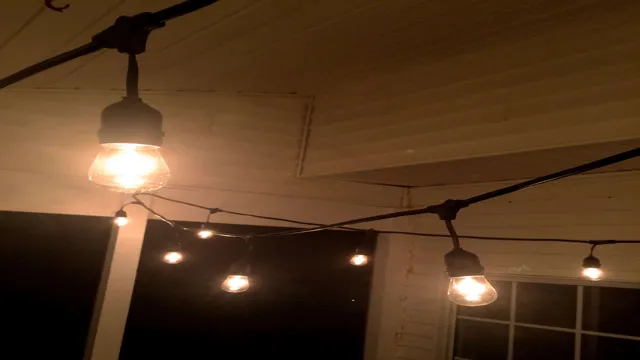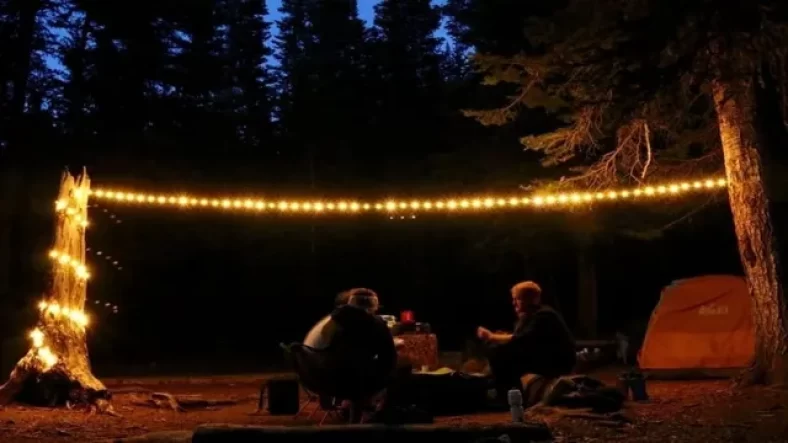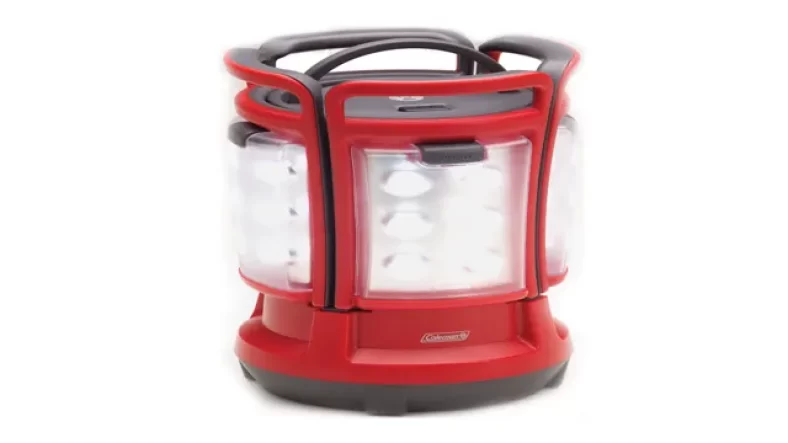Looking for a way to add some cozy ambiance to your indoor space without causing damage? Indoor string lights are the perfect solution! Not only do they add a warm glow and whimsical touch to any room, they’re also incredibly versatile, allowing you to create different looks and atmospheres depending on your style and mood. However, the prospect of hanging them up can be daunting, especially if you’re worried about damaging walls or ceilings. Thankfully, there are several ways to hang indoor string lights without causing any permanent damage.
In this blog post, we’ll explore some easy and creative ways to hang string lights indoors, so you can enjoy a bright and cozy space without any worries!
Preparation and Planning
If you are looking to add some cozy ambiance to your indoor space, string lights are a great option. However, you might be hesitant to hang them up if you are worried about causing damage. But fear not, there are ways to hang string lights indoors without causing any damage to your walls or ceiling.
First, before you start hanging anything, it is important to plan out where you want to put the lights and how you want to string them. This will help you determine how many hooks or adhesive strips you will need. Next, make sure to choose the appropriate hanging material.
Adhesive strips are a great option for lightweight strings, while command hooks can handle heavier strands. Test your hanging material first to ensure that it can hold the weight of your lights. Finally, when it comes time to affix your lights, make sure to follow the manufacturer’s instructions for the hanging material you have chosen.
With some careful planning and preparation, you can have beautiful string lights adorning your indoor space in no time!
Assess Your Space
Assessing your space is a crucial step in preparing and planning for any home renovation project. Before you start picking out paint colors and furniture, take the time to evaluate your space. Look for any potential obstacles or challenges, such as awkward corners, low ceilings, or narrow doorways.
You should also consider the overall flow of your space and how you want it to function. Do you need more storage? Do you want a more open concept? Taking stock of your space and making a plan will help ensure a successful renovation. Don’t rush this important step – take the time to think through your options and prioritize your needs to make the most of your space.
By doing so, you can create a functional and aesthetically pleasing environment that you’ll love to live in.

Determine Placement and Layout
When it comes to designing a website, determining the placement and layout is a crucial step in creating an effective user experience. Before you start placing elements on the page, it’s important to do your research and plan out the overall structure of the site. This includes creating a sitemap and identifying key pages and sections.
From there, you can start to consider how each element will fit into the layout. Remember to think about the user journey and prioritize elements accordingly. Key elements like navigation, calls to action, and important information should be easily accessible.
Using a responsive design that adapts to various screen sizes is also important for accessibility and engagement. By taking the time to prepare and plan out your site’s placement and layout, you’ll be better equipped to create a user-friendly experience that meets your goals and objectives.
Tools and Materials
If you want to add a cozy and warm ambiance to your indoor space, hanging string lights can be a great idea. But, the challenge is how to do it without damaging your walls or ceiling? The good news is that there are several tools and materials available that can help you hang string lights indoors without causing any harm. Command hooks are one of the most popular options for hanging string lights.
They can be easily attached to the wall and can hold the lights securely. You can also use adhesive clips that can be easily removed without leaving any residue. Additionally, you can use suction cups or wire hangers to hang the lights.
Just make sure to choose the right tools according to your wall or ceiling type and follow the instructions carefully. By using these tools and materials, you can enjoy the cozy and romantic ambiance set by the string lights without worrying about damaging your walls or ceiling.
Choosing the Right String Lights
When it comes to choosing the right string lights, you’ll need to have some tools and materials before you begin. Firstly, you’re going to need a measuring tape to figure out how long the lights should be, as well as to determine how much space you have to work with. Secondly, you’re going to need to decide on the type of string lights you want.
Do you want LED lights or traditional incandescent bulbs? Additionally, you will need to consider the color temperature of the light, as well as the type of bulb shape. In terms of materials, you’ll need string light hooks, extension cords, and possibly a timer to set when you want the lights to turn on and off. Keep in mind that not all string lights are weather-resistant, so if you plan on using them outdoors, make sure to choose ones that are designed for this purpose.
By having these materials and tools on hand, you’ll be well-prepared to install your perfect string lights.
Hardware and Adhesive Options
When it comes to DIY projects, having the right tools and materials can make all the difference. For hardware options, it’s important to choose the right size and type for your project. Screwdrivers, pliers, and hammers are often essential, but a drill or power saw may also be necessary depending on the job.
For adhesive options, there are many types to choose from such as glue, tape, and epoxy. It’s important to consider the surface being bonded and the strength needed for the project. Some adhesives may work better for wood or metal, while others may be better suited for plastics or ceramics.
It’s also important to consider the drying time and any safety precautions needed when using certain adhesives. Remember, having the right tools and materials can save you time, money, and ultimately create a more successful project.
Hanging Techniques
If you’re looking for a way to add some cozy ambience to your space, hanging string lights indoors can be a great option. But if you’re worried about damaging your walls, don’t fret. There are ways to hang string lights without causing any harm.
One technique is to use adhesive hooks designed for hanging pictures or decorations. Simply attach the hooks to the wall, and then hang the lights from the hooks. Another option is to use tension rods, threading the lights through the rod and then placing it between two walls or surfaces.
If you’re looking for a more whimsical approach, try using drapery hardware to hang the lights, creating a canopy or swag effect. No matter which technique you choose, be sure to measure carefully and plan out the placement of your lights beforehand to ensure a seamless and beautiful installation. With a little bit of planning and creativity, you can create a cozy and inviting atmosphere in your home without causing any damage.
Using Tension Rods or Command Hooks
If you’re looking for an easy and damage-free way to hang things in your home, tension rods and command hooks are the way to go. With tension rods, you can easily create temporary walls or hang curtains without drilling holes or damaging your walls. Simply choose a tension rod that fits your space and place it in position.
As for command hooks, they work wonders for hanging lightweight items. They can be easily attached to walls, doors, and other surfaces without leaving any residue or damage. Simply peel and stick your hook, and you’re good to go.
Whether you’re renting or just looking for a temporary solution, tension rods and command hooks are great options for hanging things around your home.
Creating a Support Structure
Hanging Techniques for Creating a Support Structure When it comes to creating a support structure, such as hanging something on a wall, there are a few different techniques to consider. First off, it’s important to assess the weight of the item you want to hang and choose a hanging system that can support that weight. One option is to use picture hanging hooks specifically designed for heavier items.
These hooks have a reinforced design and can handle up to 100 pounds. If you’re hanging something that’s not too heavy, you can use adhesive strips that don’t require any nails or drilling. These strips are strong and can hold up to 16 pounds.
Another option is to use a French Cleat system, which involves a piece of wood with a 45-degree angle cut down the length of it. This system is perfect for hanging heavy mirrors or artwork since it distributes the weight evenly and securely. With these hanging techniques, you can create a support structure that’s strong and reliable, ensuring your items stay safely and securely in place.
Safety Tips
When it comes to hanging string lights indoors, it’s important to ensure that you do it safely so that you don’t damage your walls or pose a risk to your home. The first thing to consider is the type of string lights you are using, as some are designed for outdoor use and may not be suitable for indoor use. Before you start hanging, make sure you have the right materials, including adhesive hooks or clips and a stud finder to locate the right spots to attach them.
Avoid using nails, screws, or other hardware that may damage your walls. It’s also important to check the weight capacity of the hooks or clips you are using to ensure that they can support the weight of your lights. Finally, be sure to follow the manufacturer’s instructions when it comes to connecting and stringing your lights, and never leave them unattended for an extended period of time.
With these tips in mind, you can safely and beautifully decorate your indoor space with string lights without causing any harm.
Check Electrical Outlets and Wiring
Checking electrical outlets and wiring is crucial for maintaining a safe home. There are a few safety tips to keep in mind when doing so. Firstly, always turn off the power supply before inspecting outlets or wiring.
This will minimize the risk of electrical shock. Secondly, check for any signs of damage such as frayed wires, loose connections, or burns. If you notice any damage, call a professional electrician to fix it.
Additionally, it’s important to determine whether your home’s electrical system is up to code. Outdated systems can pose a serious hazard and may need to be upgraded. In summary, taking the time to ensure your electrical outlets and wiring are properly maintained can prevent potential accidents and keep your home safe.
Avoid Overloading Circuits
When it comes to electricity in our homes, safety should always be our top priority. One critical safety tip to remember is to avoid overloading circuits, which can lead to fires and electrical hazards. An overloaded circuit occurs when too many devices or appliances are plugged into the same outlet, exceeding its capacity and causing the wiring to overheat.
To prevent this, it’s essential to distribute the load evenly across several outlets and circuits, especially in older homes with outdated wiring. Additionally, using surge protectors and avoiding extension cords can also help prevent overloading circuits. By always being mindful of how much electricity we are using and regularly checking our circuits, we can ensure our homes remain safe and hazard-free.
Remember, prevention is always better than cure, and small precautions like these could potentially save your life!
Conclusion: Enjoy Your Stylish and Safe Indoor String Lights!
In conclusion, hanging string lights indoors without damaging your walls is a bright idea. Not only do they add an enchanting ambiance, but they also provide a practical lighting solution for any occasion. By utilizing adhesive hooks, tension rods, and delicate clips, you can achieve the perfect placement without leaving behind unsightly holes or marks.
So, light up your life and let your creativity shine with these tips for damage-free string light hanging!”
FAQs
What are some materials needed to hang string lights indoor without damaging walls or ceiling?
Some materials needed to hang string lights indoor without damaging walls or ceiling include removable adhesive hooks, electrical tape, command strips, and zip ties.
How do I pick the right type of string lights for indoor use?
To pick the right type of string lights for indoor use, consider the length and color of the lights, the type of bulbs used, and whether they are designed for indoor use. LED lights are a good choice as they emit less heat and are more energy-efficient.
Can I use string lights indoors if I don’t have an electrical outlet nearby?
Yes, you can use battery-operated string lights indoors if you don’t have an electrical outlet nearby. These lights are also safer as they don’t generate heat or pose a fire hazard.
How can I create a DIY canopy using string lights indoors?
To create a DIY canopy using string lights indoors, you will need to hang the lights from the ceiling using hooks or other materials. Drape the lights evenly across the ceiling, then create a canopy shape by attaching the lights to the walls using removable adhesive hooks or command strips.





Leave a Reply